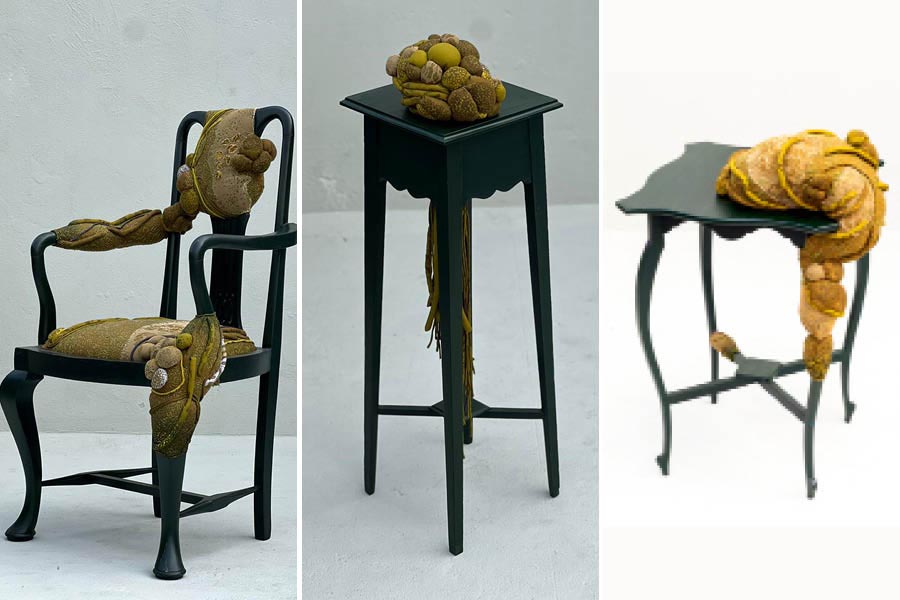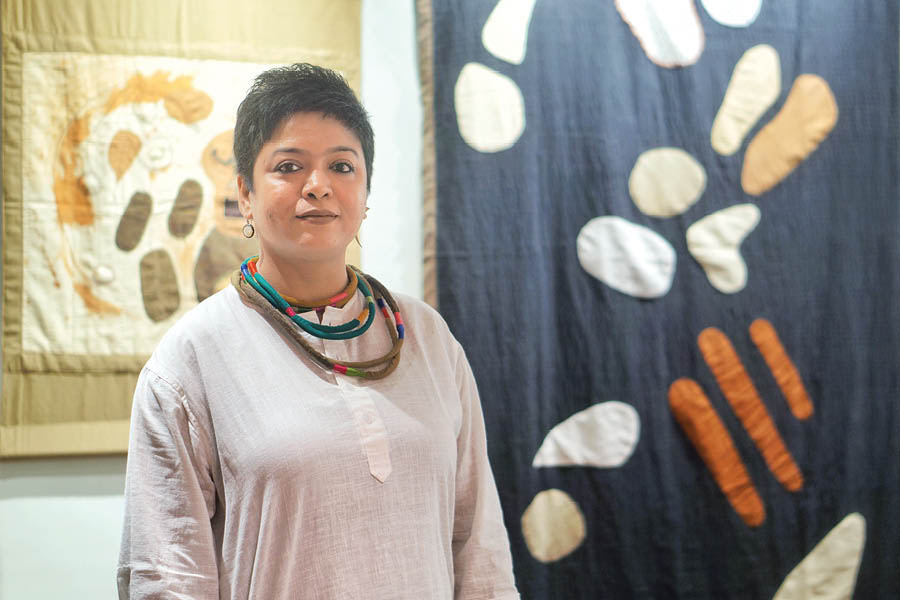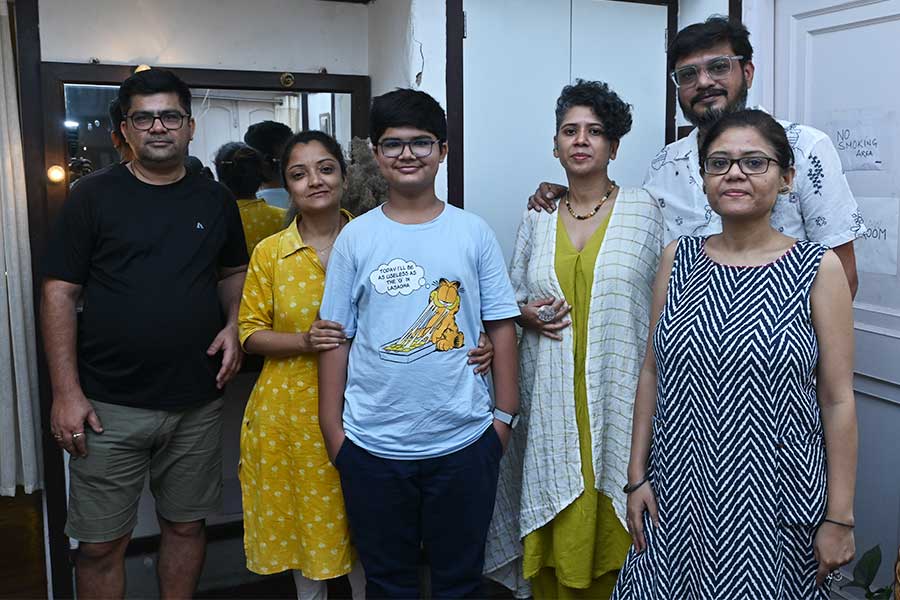Swarup Dutta’s ongoing exhibition in Mumbai is all about exploring design and politics through collaborations with different artists and their respective crafts. Titled ‘Gandi Baat’ – the rather offbeat and interestingly intrepid presentation is being held at gallery ‘47-A’ in Khotachi Wadi, Girgaum of Mumbai.
Khotachi Wadi — traditionally the home of Mumbai’s east Indian and Pathare Prabhu communities — lies almost hidden amid the bylanes of south Mumbai’s Girgaon neighbourhood.
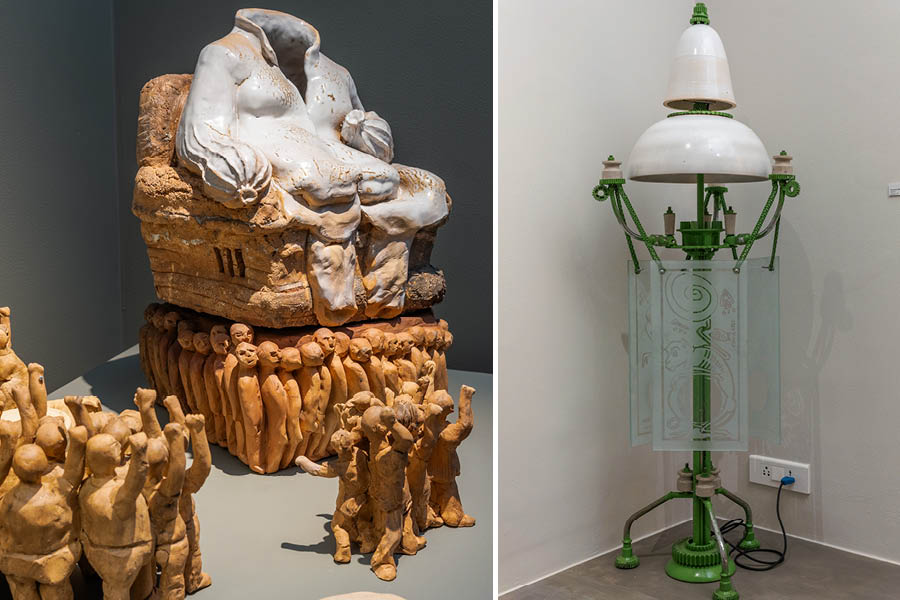
Deliberately launched to coincide with the ongoing election process of the country, the exhibition presents a humour-laced ‘take’ on the political fabric prevalent in India through topical items.
A creation of Mortimer Chatterjee, Tara Lal and Srila Chatterjee, the gallery aims to celebrate the past, present, and future of Indian design while bringing forth the challenged worlds of design, craft and art. The exhibition was inaugurated on May 4 and will continue till June 2 and will stay open for visitors between 11am and 7pm on all days of the week except Monday.
His project in Kolkata, Calcutta Bungalow, Dutta adds is his labour of love and is an example of “how, if we keep the city the way it is and spruce it up, paint old houses – what a magnificent city the country could have”.
Dutta’s first such endeavour in Mumbai is a bold comment on India’s political fabric and is highlighting the exhibits of artists Abhishek Ray, Achira Basu, Ashish Ghosh, Bazlur Rahaman, Meenakshi Sengupta, Phalguni Samanta, Samir Roy, Sanjita Sarkar, Shohini Gupta, Soumitra Adhikari, Sumanta Chakroborty, Tamal Bhattacharya, Tulu Sarkar, and last but not the least Vivek Kumar.
Dutta is known for working with different artistic forms such as photography and scenography whilst advocating for indigenous arts and crafts. Sparing no efforts to reignite political discourse through design, Dutta propagates design activism while bringing artists and artisans under one roof to showcase Bengal’s bountiful heritage of art.
Dutta has also acquired many accolades for his contributions to heritage art restoration in Kolkata as well as for his award-winning project titled ‘Calcutta Bungalow’.
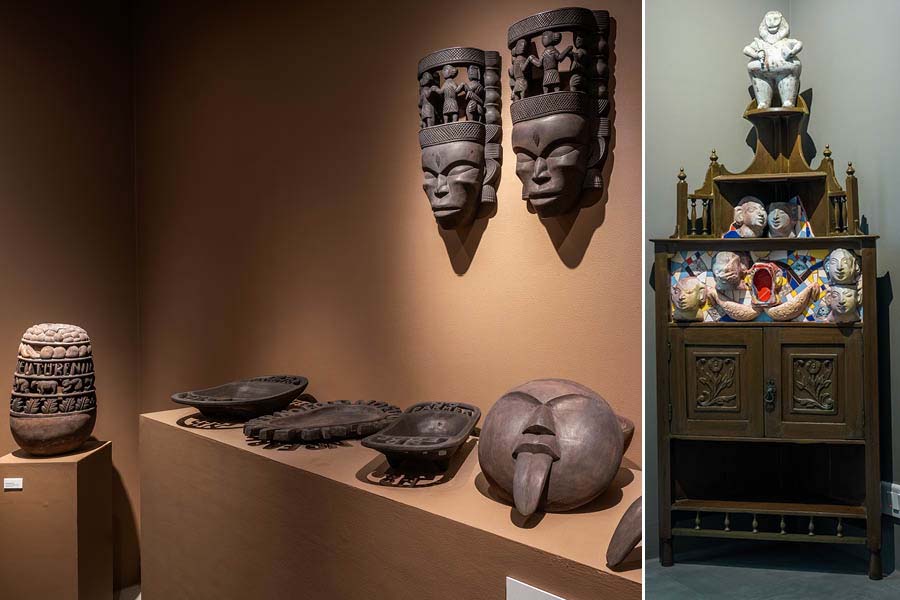
Glimpse of some more exhibits.
Deliberately launched to coincide with the ongoing election process of the country, the exhibition presents a humour-laced ‘take’ on the political fabric prevalent in India through topical items, all the while highlighting issues relating to farmers, price escalation and such others designed to ignite ‘conversations’ among all.
Dutta explained to My Kolkata the idea behind this particular exhibition: “The premise of this stems from the fact that I come from a Bengali joint family where like many others, political discussion whether at home, over dinner and everywhere is always happening. Different points of view come up and we all learnt quite a bit. So I have grown in an environment where I have always wanted to go deeper and learn more. I feel that what has happened of late is that as urban Indians our overlap with politics is minimal.”
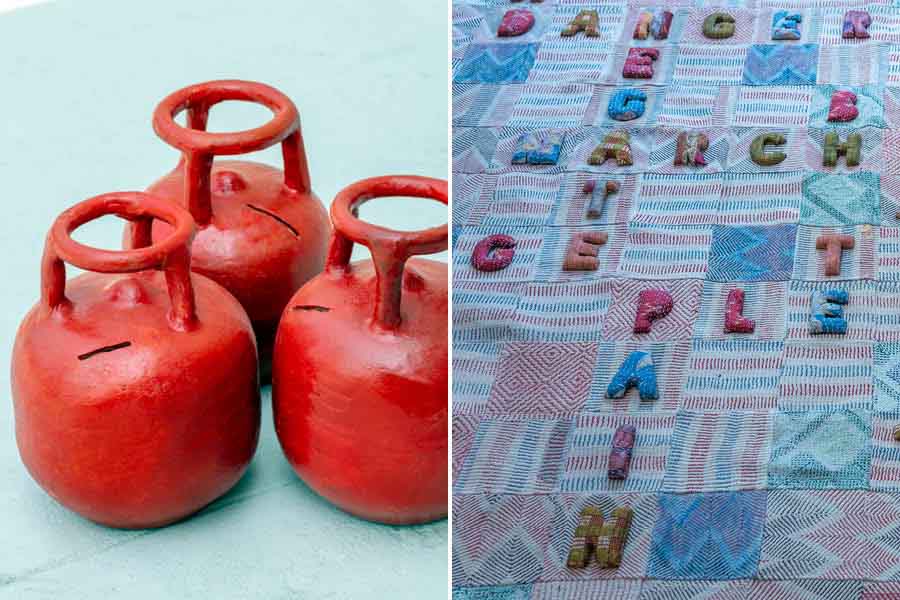
LPG cylinders and their connect to the economic scenario of most and (right) a rug with random but crucial selection of words on a crossword pointing to the current political scenario
“Beyond issues such as power, roads and cleaning of cities and such others there is not much that we are dependent on them on a day-to-day level. We have kind of side-tracked politics as a kind of ‘dirty dog’ that we do not want to talk about. Also, conversations are becoming rhetorical between parties rather than being more concerned with facts. It cannot be denied that today, the urban Indian is not that interested in politics. That explains the title, ‘Gandi Baat’ for the exhibition.”
Commenting on visitors’ reactions, Dutta said: “That there have been very interesting and diverse reactions from the representatives of the many stratas of society who have visited.”
Reflecting on the many installations of the show, Dutta, while accepting that every one of the exhibits is exceptional and very deserving of the praise that they have received, chose to point out some for the readers.
The installation by Shohini Gupta crafted around antique furniture – heirlooms or objects that spread a sense of stability besides being an element of ‘bankable’ history was not to be missed. The furniture, he explained, has been used an allegory, as a sign of continuity in times when the country is rightly going for a revaluation of colonial presences but is also becoming ensnared by false narratives, fake news, and propaganda. This is all happening through a very uncanny process and the bulbous growth in the installation is an allegorical representation of how not everyone is feeling too great about it. It was designed to create a disdain, be shrugged off and in that the objects have been very successful.
The work of Dinajpur’s Tulu Sarkar, said Dutta, is very representative of the political battlefield that the area has become between different groups. “His installation with blind monkey figures is about people joining different parties but without having any sure ideas of what they are wanting or need to address.”

Imagery added to explain the creative processes to visitors.
Sanjita Sarkar, a loom weaver who is among the many who still make ‘Dhokda’ or ‘Dhokor’-the small carpet with very minimal small motifs has brought forth her creativity by incorporating very large English words into her carpets shown in the exhibition.
Sharing her feelings for the installation, Gupta said: “This collaboration of mine with Dutta started from my solo show that happened last December. I basically work with organic forms and I generally concentrate on the environment.”
Happy at having given the artisans and artists a different voice, removed from their usual practises and empowering them to believe that some changes for the positive are eminently possible – Dutta sees every reason to push forward and further very relevant ‘conversations’.
